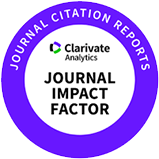Comparative Analysis of Meat Quality and Muscle Transcriptome Between Landrace and Jeju Native Pig
Received: Dec 26, 2024 ; Revised: Feb 12, 2025 ; Accepted: Mar 12, 2025
Published Online: Mar 25, 2025
Abstract
Jeju native pig (JNP) is an indigenous breed originating from Korea, characterized by short black hair, small stature, and superior meat quality compared with commercial breeds. This study investigated meat quality and transcriptome differences in the Longissimus dorsi muscles of Landrace and JNP pigs. Phenotypic analysis of meat quality traits was performed on each breed, revealing significant differences in cooking loss, crude fat, moisture, lightness, redness, shear force, pH, hardness, gumminess, and chewiness (p < 0.05). JNP exhibited significantly higher intramuscular fat content and redness (p < 0.001), which increases consumer preference, suggesting that JNP have superior meat quality traits. To understand transcript expression differences, indicating differences in meat quality characteristics and growth between the two breeds, RNA sequencing was performed on Longissimus dorsi muscle samples from each breed. Overall, 427 differentially expressed genes (DEG) were upregulated in JNP, while 821 genes were upregulated in Landrace. Among these, MYH2, MYH6, MYH7B, MYO5B, IGF1, IGFBP5, SFRP2, EGFL6, MATN3, HAPLN1, FBLN7, and LINGO1 were key candidate genes. Enrichment analysis in GO and KEGG pathways suggested DEG are involved in biological processes such as the cell cycle, extracellular space, collagen trimer, platelet-derived growth factor binding, and motor proteins. This study provides important insights into the genetic expression characteristics of Landrace and JNP and elucidates the mechanisms related to economic traits, such as superior meat quality and growth rate. Additionally, these findings provide foundational data for improving meat quality and suggest strategies for the genetic improvement of both breeds.













